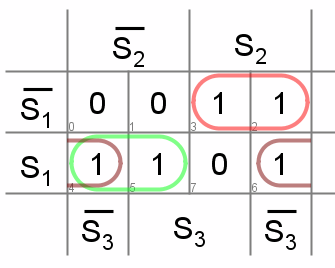I believe I'm having some issues interpreting an assignment for my Digital Systems class. What I've done so far is make the segment table for the display, make a truth table for A-G, k-maps for A-G, Logisim diagram for a normal 3 to 8 for reference, and a Logisim diagram for the equations from the k-maps.
The assignment says that, for the 7-segment display, I need to "Implement the circuit only in Logisim/Circuitverse using a 3-8 decoder (built with AND gates and NOT gates), OR gates, and a 7-segment display driver." I've attached some screenshots of the work I've done so far for reference. I'm unsure if I need to take the normal 3 to 8 decoder and figure out a way to use a OR gates to output correctly to the 7-segment. Or do I need to derive the equations like I've done with the k-maps? Like a 7-segment decoder? Below is my work, the language of the assignment is what's really boggling me. Do you think that I've done it correctly already? I'm not looking for the answer to the question, but rather if I'm on the right track or not.







